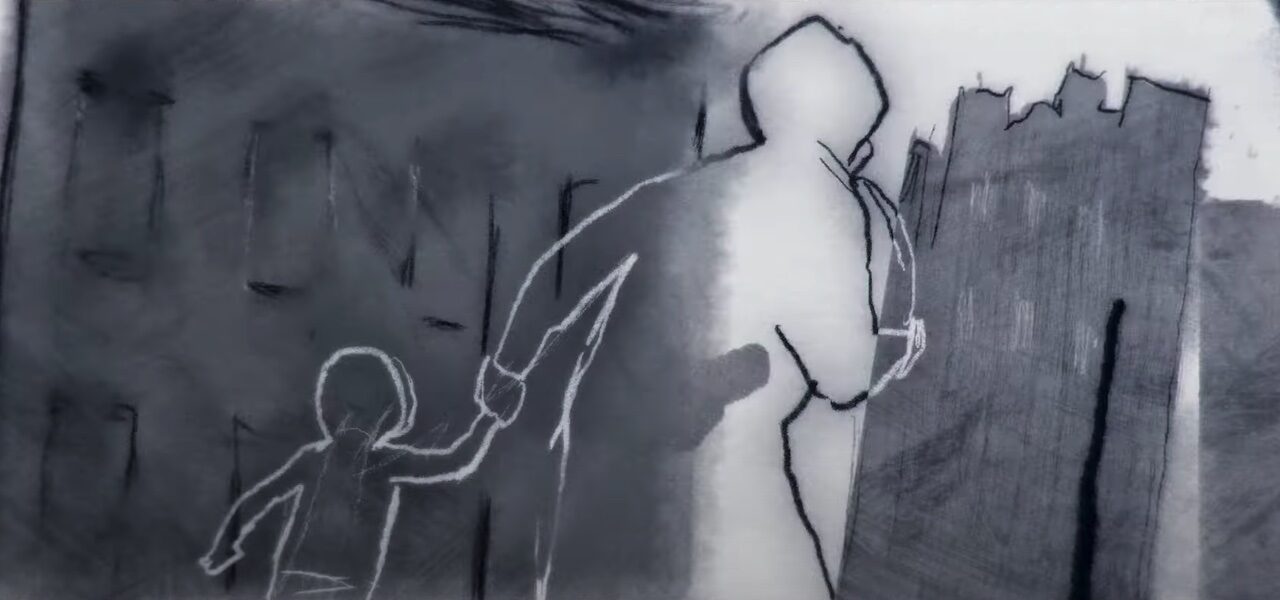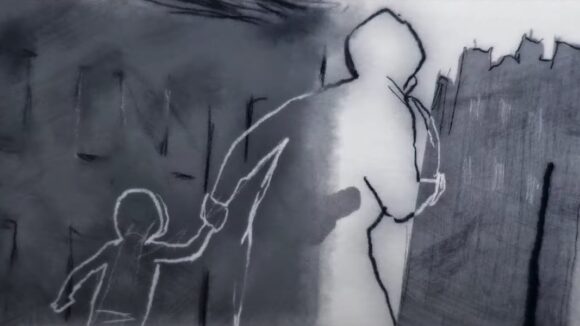

‘Flee’ Reviews Roundup: Refugee Doc Is One Of 2021’s Best Animated Films
Flee is taking flight: the film opens today in U.S. theaters in the wake of a flurry of award nominations.
The film is currently in just four theaters in LA and NYC (AMC Sunset 5, The Landmark, AMC Lincoln Square 13, Angelika Film Center). It will expand to other U.S. cities in January.
The documentary profiles Amin (a pseudonym), an Afghan refugee living in Denmark with his boyfriend. Burdened by trauma, he reveals his life story to director Jonas Poher Rasmussen, his longtime friend. Scenes of Amin’s present and past lives — all animated — are intertwined with archive footage that provides historical context.
Regular readers will be familiar with the film, which we’ve been following since it was selected at last year’s cancelled Cannes Film Festival. It has had a stellar run since then, winning at festivals such as Sundance and Annecy, and being nominated by Hollywood Critics Association and at the Gotham Awards. It is also Denmark’s submission to the Oscars’ international feature category.
Flee is released by Neon and Participant. Monica Hellström and two-time Oscar nominee Signe Byrge Sørensen produced the doc via Final Cut for Real, and the co-producers are animation studio Sun Creature (Denmark), Vivement Lundi! (France), Mostfilm (Sweden), Mer Film (Norway), Arte (France), and Vpro (Netherlands). Star executive producers Riz Ahmed and Nikolaj Coster-Waldau are onboard; they also voice characters in the English dub.
Critics agree with award voters, giving the film a very positive reception: it currently has a 98% Tomatometer score on Rotten Tomatoes. Here’s what the reviews say:
Vox’s Alissa Wilkinson raves about Flee, calling it “perhaps [the year’s] best animated film”:
The animation is both an aesthetic choice and a practical one. Some of it simply helps protect the identity of some of the film’s refugees or the people who came to their aid, but there’s more than that. Most of the events Amin describes could never have been caught on film; giving the audience even an artful glimpse of these events makes them hit that much harder.

The Associated Press’s Lindsey Bahr goes further, calling it “easily one of the best films of the year”:
Rasmussen spent years interviewing Amin before starting work on the film. He also includes some actual newsreel footage, which helps remind the viewer that these events were very real. Flee is such a rich, seamlessly told and emotionally affecting story that it’s easy to get wrapped up in the narrative and forget that fact. But Rasmussen and his team are there to make sure we don’t.
For A.O. Scott of The New York Times, the use of animation affects the film’s tone in an important way:
The animation suffuses Flee with a strangeness that a conventional documentary might not possess, and that perhaps mirrors Amin’s own alienation. He isn’t unhappy, but his features seem shrouded in melancholy, a condition Rasmussen addresses with sympathy rather than sentimentality. Luck and loss can’t be disentangled, and that may be the meaning of home that this patient, humane film arrives at.
Joe Morgenstern singles out one impressive scene in his enthusiastic review for The Wall Street Journal:
The most memorable sequence in Mr. Rasmussen’s film starts quietly, and pulses with false hope as a small boat full of refugees crosses sea lanes with a Norwegian cruise ship full of tourists. Will the refugees be hoisted up from their crowded deck into freedom? While their fate floats in the balance, passengers on the cruise ship stand at the rails snapping photos of those below. It’s a stunning moment, and an instructive one. We are all snapshooters these days, highly placed spectators to tragedy that seems to be beyond our comprehension, let alone control. Flee takes us down to sea level.
The A.V. Club’s Noel Murray is less gushing, arguing that the different strands of Amin’s backstory don’t quite tie together into a satisfying narrative:
But while Flee never fully bridges those gaps between the “man on the run” backstory and the “man who isn’t sure he can be a good husband” present-day narrative, Rasmussen and Amin do bring their testimonial to a revealingly poignant place, just before the closing credits. In the end, this is a well-drawn depiction of what happens to a person who is rendered rootless, and is left to live perpetually on the defensive.
